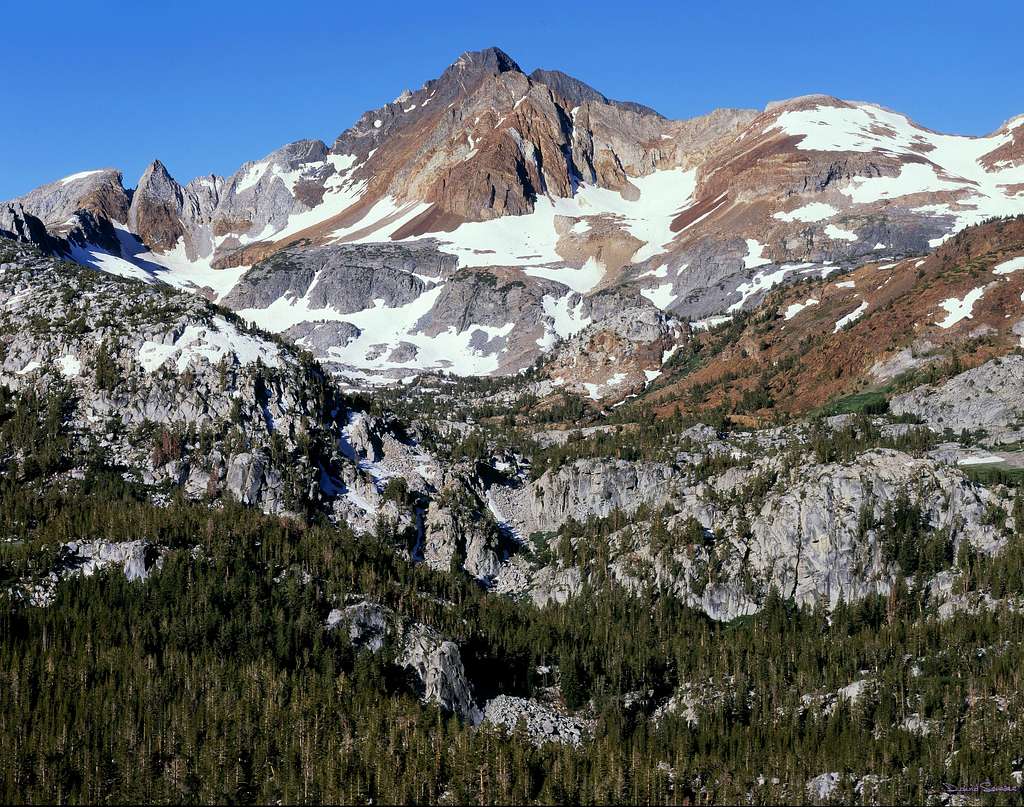...mouse click to hugely enlarge...
This is a
Provia 100F 4x5 transparency exposed about 8:15am on August 15 of 2011 through my 300mm Nikkor lens. Before our 5 day backpack to the upper
McGee Creek area, I analyzed the topo for an optimal viewpoint down canyon to capture both Red and White Mountain and the upper canyon areas in front of it. On our second morning after camping below, I climbed up into this zone and had difficulty finding a complete view that was not partially blocked by pine branches. On the frame left skyline edge is
Gunsight Notch. The formation just left of the notch I like to call "The Badger". And the saddle just in front is
Hopkins Pass.
One of the Sierra's most colorful peaks,
Red and White Mountain at 12816 feet 3.3 miles distant is ancient Paleozoic marine geology going back to the dawn of advanced life on Earth. Unseen in this image down in a depression is Big McGee Lake at 10320 feet. It is where a large snowfield below the peak meets the forested area of the canyon bottom.
There is however an unnamed lake in this view though it is difficult to see. (to see detail click image to enlarge) At mid frame is the cliff face of a dome with forest on its top. We camped two days on that dome within some shady mountain hemlock. Just left of the dome is an area of talus with a long narrow snowfield on its left. McGee Creek flows beneath that big talus and some of its whitewater can be seen just above beside a shaded snowfield. Just above that is a dark section with a bit of white snow reflection of another small snowfield just behind it. That dark section is reflecting water. Like other Eastern Sierra High Sierra crest canyons with permanent snow fields in their highest shady recesses, there are good stream flows late season down McGee Creek even in the driest years that supports an abundant population of eastern brook trout and birds.
At lower frame below the mentioned dome, are dense areas of a lodgepole pine forest with occasional mountain hemlock. Most trees higher up on canyon walls are whitebark pines. During our visit, water from still melting snows made for luxuriant vegetation conditions including abundant wildflowers especially in meadow areas.
Though this web image is large, it is just a crude flatbed scan at only 1200 ppi so the actual transparency shows more detail only a drum scan would provide. The full scan image size 5500 pixels wide was then downsized to 3000 by 2363 pixels for the sake of this web posting to 3.7 megabytes.
David Senesac
http://www.davidsenesac.com